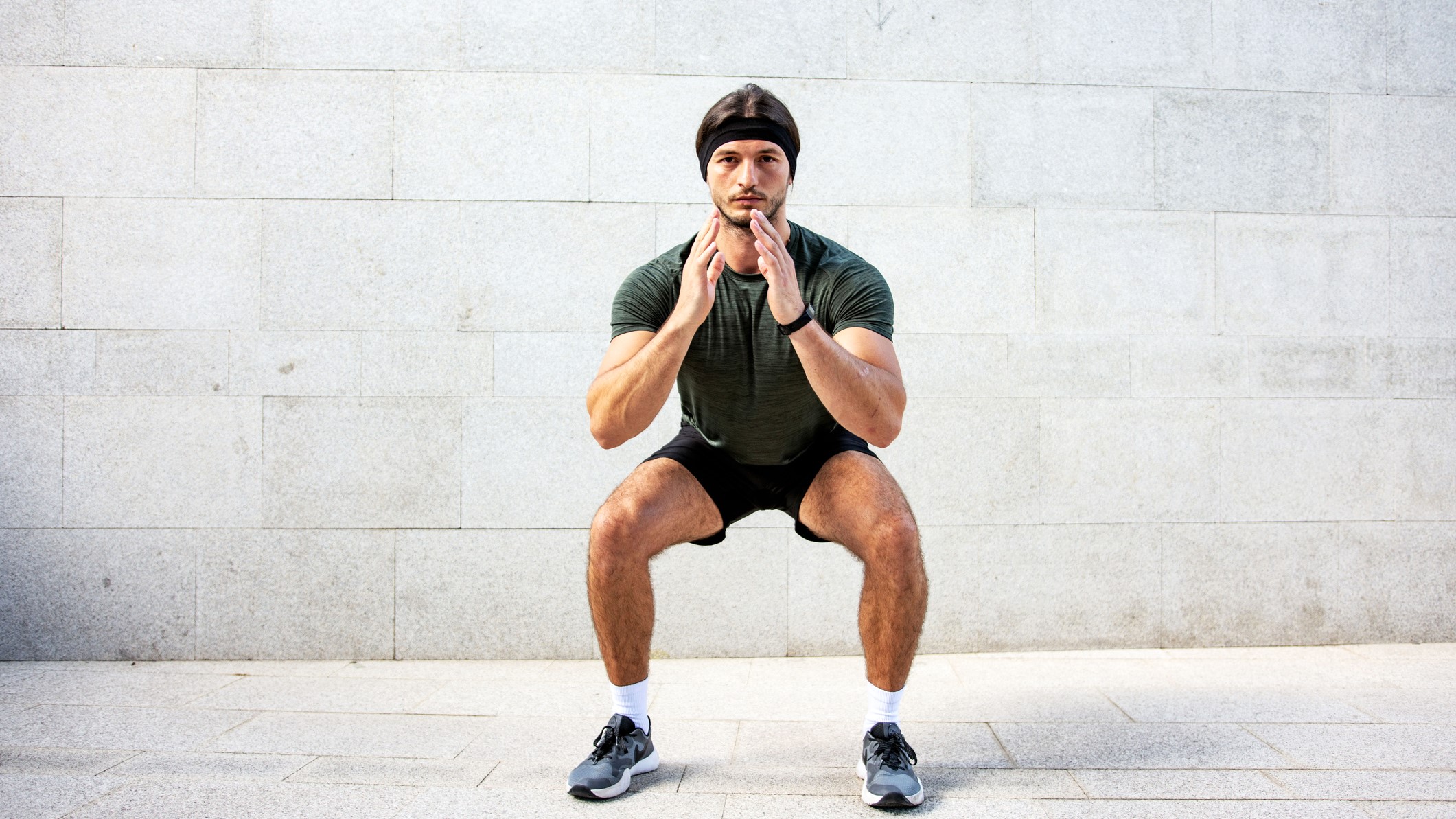
The gorilla walk is a full-body workout to remember. Hands up if you've ever wondered what walking like a gorilla does to your body. Just me, then. The gorilla walk isn’t one of the typical walking workouts you'd be seen doing in public unless you're cool with the quizzical stares, so I stuck to nine minutes every day for one week — alone. Noises optional.
The gorilla walk is a popular animal-themed exercise for gym classes, calisthenics and animal flow classes. It’s great fun and involves moving like a gorilla using your whole body for locomotion. You’ll need some space to do it, and the move is more arduous than it looks, as I soon learned.
Not one to miss an opportunity for a fitness challenge, I set myself a target of nine minutes daily to see what I could learn about the full-body exercise. Here’s what happened, and my thoughts on whether this is worth adding to your routine. Grab your yoga mats, and give this a try.
How to do the gorilla walk
There are several ways to do the gorilla walk, and, like many exercises in the fitness world, it’s open to interpretation. Both the gorilla walk variations I practiced tap into quadrupedalism, meaning to weight-bear on four limbs.
Here’s how to do the lateral gorilla walk:
- Start in a low squat position with both heels planted slightly wider than shoulder-width apart and your knees tracking in the same direction as your big toes
- Keep your spine neutral without hunching over, and engage your core
- Begin to gently sway from side to side and allow your arms to go heavy. Think about pulling your bum downward toward the floor and pinning your shoulders back
- Swing your hands to the right just in front of you, planting your right then left hand down
- Driving movement with your core, allow your legs to follow, jumping your feet over to land your right foot, then left foot
- Continue to move laterally in one direction, then make your way back in the other direction.
To do the forward-moving variation, start in the low squat position and follow the starting cues above. This time, create fists with both hands and place both fists down on the ground in front of you. Squeeze your forearms, jump both feet forward to the outside of your hands and continue moving forward.
I did the 9-minute Gorilla Walk exercise every day for a week — here’s what happened
I enjoyed working on mobility
The walk was far kinder when teeing up a warm-up beforehand. That said, the gorilla exercise is commonly used as a warm-up for functional training. I could feel how stiff my muscles were as I lowered into the starting squat position, and I’m glad I planned nine minutes a day to help get into the swing of things — lame pun intended.
Get instant access to breaking news, the hottest reviews, great deals and helpful tips.
Gorilla walks are brilliant for developing hip, shoulder and wrist mobility and work the major muscle groups, including the core muscles. I didn’t feel more mobile in my upper body by the end of the week, but I noticed a difference in my hips and hamstrings.
It got my heart rate soaring
I broke each day up into nine sets of 60-second efforts. After just one minute on the first day, I felt gassed. Despite instructors making this one look easy, it takes considerable strength to move your body by transferring weight between your upper and lower limbs. It also requires coordination to move quickly and generate momentum, which jacked my heart rate up.
I found lateral gorilla walks more challenging
It’s hardly surprising, considering we humans move sideways far less often than forward and backward. And I don’t know about you, but I don’t spend much time walking around on all-fours either. I enjoyed the variation in working my obliques and outer glutes harder, as lateral motion does, and it provided a great test of balance and stability.
The gorilla walk isn’t one of the typical walking workouts you'd be seen doing in public unless you're cool with the quizzical stares.
However, forward-motion gorilla walks torched my upper body much more than sideways motion, and weight-bearing was strenuous on my fists, wrists, forearms and shoulders, especially for nine minutes per day. I alternated between forward and lateral variations every round, collapsing into a heap by the ninth minute every time. No wonder gorillas are jacked.
I didn’t anticipate the arm work rate
If you have wooden floors, be careful when balancing on your fists and keep them tight with your thumbs wrapped as you move — something I learned quickly. The upper body (for me, at least) fatigues far quicker than the legs, so you might need to adjust your sets and reps accordingly or try adding a resistance band above your knees or ankles to increase activation.
Moving to the right side (my stronger side) felt more natural, while I needed more coordination to find my flow during travel to the left. But most importantly, no matter how I approached it during the week, I learned that pace is key, that 60 seconds per round is enough, and I must work harder on my forearm strength. Who knew the gorilla walk could be so demanding on your muscles?
Verdict
Animal flow instructors spend a lot of time on all fours, and it’s a brilliant way to increase coordination, mobility, functional strength and range of motion. Besides, we don’t give enough credit to the bodyweight exercises found in calisthenics routines or animal flow. These are some of the toughest to do for sustained periods because you are learning to move using however much you weigh.
So, should the gorilla walk earn a place in your workout regime? Yes and no. I wouldn’t program it within a hypertrophy or strength training program, but during a bodyweight HIIT class? Maybe. I think it’s worth giving this full-body exercise a shot if your focus is on improving mobility or you enjoy calisthenics.
If anything, it works expertly as a warm-up exercise before CrossFit style or bodyweight workouts. Not only does the move activate nearly every muscle group, helping to prime the muscles and joints for exercise, but it should also help to tease out some of the uncomfortable muscular tension and tightness you face when heading into exercise after a day at your desk.
Weak forearms are the downfall of this exercise, but we’ve got a dumbbell forearm workout for that. If you’d prefer to avoid weight-bearing on your fists, place your hands flat on the ground instead.
More from Tom's Guide
- IKEA just launched a home workout collection from $6.99 — no assembly required
- Garmin just rolled out a big update to its most popular watches — here’s all the new features
- I did the 3-minute frog pose exercise every day for one week, here's what happened

Sam Hopes is a level 3 qualified trainer, a level 2 Reiki practitioner and fitness editor at Tom's Guide. She is also currently undertaking her Yoga For Athletes training course.
Sam has written for various fitness brands and websites over the years and has experience across brands at Future, such as Live Science, Fit&Well, Coach, and T3.
Having coached at fitness studios like F45 and Virgin Active and personal trained, Sam now primarily teaches outdoor bootcamps, bodyweight, calisthenics and kettlebells.
She also coaches mobility and flexibility classes several times a week and believes that true strength comes from a holistic approach to training your body.
Sam has completed two mixed doubles Hyrox competitions in London and the Netherlands and finished her first doubles attempt in 1:11.

